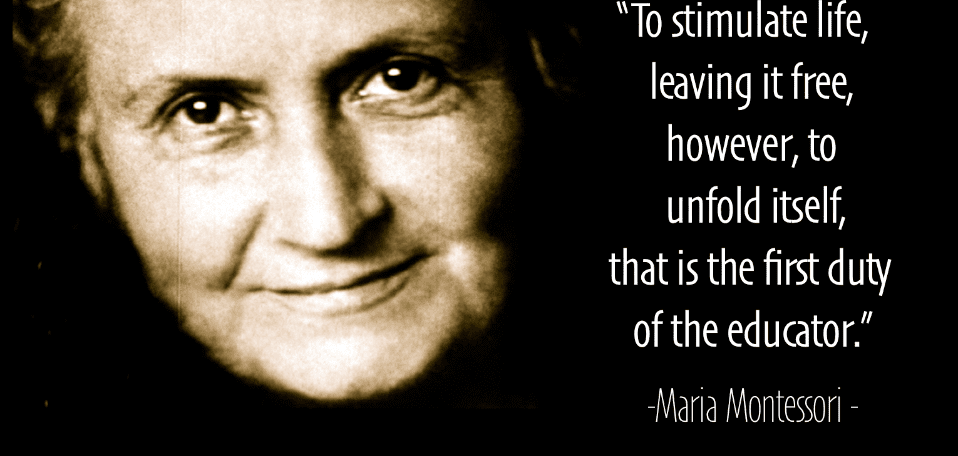
Everything You Need to Know About Montessori Education

Traditional vs. Montessori
Dr. Maria Montessori, the founder of Montessori education in the early 1900s, is one of the greatest reformers of early childhood education. By the early half of the 20th century, her philosophy and methods of educating youth were widely practiced throughout the world, from Europe (e.g., Italy, England, France, and Austria) to Asia (e.g., India, China, Korea, and Japan) and in the US.
Today, many ideas, techniques, and concepts in early childhood education trace their roots to Dr. Montessori’s work, including sensitive periods, a prepared environment, child-centered education, and freedom from rewards or punishment. Because her philosophy focuses on the development of the inner child, allowing children to achieve their full potential, her methods have timeless value.
Based on such profound philosophies and methods, we at HMA strive to create a learning and stimulating environment where children are encouraged by our teachers.
Why Montessori
Focuses on Key Developmental Stages
A Montessori curriculum focuses on key developmental milestones in children between three and five years old. The focus is on fostering vital skills in children of various age groups. Younger children actively develop their large muscle and language skills. Four-year-olds dive into refining their fine motor skills and accomplishing everyday tasks like cooking and engaging in arts and crafts.
As children progress to older preschool years, they embark on exciting adventures within their communities, venturing on trips and participating in special events that broaden their learning experience.
Child-Centered Learning
Montessori preschool students enjoy a classroom and curriculum designed around their specific needs and abilities, allowing them to explore and learn at their own pace and terms. Each part of the classroom is designed with your child in mind. Everything is within reach, and furniture is specifically sized for ultimate comfort, allowing your little one to focus on learning. Older children take on the role of mentors, offering guidance and support alongside experienced teachers.
Classroom Environment Teaches Order
All objects and activities have precise locations on the shelves of a Montessori classroom. When children finish an activity, they are taught to place items back in their appropriate places. This sense of order helps facilitate the learning process, teaches self-discipline, and caters to a young child’s innate need for an orderly environment.
When children have a neat and predictable space to work and play in, they are able to fully unleash their creativity and concentrate on the joy of learning.
Teachers Facilitate the Learning Experience
Teachers in the Montessori classroom serve as guides that facilitate the children’s learning experience rather than determine what it will look like. Teachers lead the classroom, ensure the ground rules are followed, and encourage students to perform tasks at their own pace. However, they do not determine the pace of the classroom. That is strictly up to individual students, as teachers strive to remain as unobtrusive as possible.
Learning Method Inspires Creativity
Since children can choose their activities and work on them on their own terms, creativity in the classroom is encouraged. Children work at tasks for the joy of the work rather than the end result, which allows them to focus more on the process—a natural path to creativity. Exposure to various cultures also encourages children to broaden their thinking about the world and address those concepts in multiple ways.
Curriculum Focused on Hands-On Learning
One of the greatest benefits of the Montessori method, particularly during the early learning experience, is the focus on hands-on learning. The emphasis is on concrete rather than abstract learning, as students work on activities that teach language, math, culture, and practical life lessons.
Teachers encourage students to concentrate on tasks, discourage them from interrupting one another, and allow them to focus on activities until they are properly mastered.
Benefits of Montessori Education
1. Montessori education offers our children opportunities to develop their potential as they enter the world as engaged, competent, responsible, and respectful citizens who understand and appreciate that learning is for life.
2. Each child is valued as a unique individual. Montessori education recognizes that children learn differently and accommodates all learning styles. Students have the freedom to learn at their own pace, progressing through the curriculum when they are ready, supported by their teacher, and provided with a personalized learning plan.
3. Unlocking the potential within them, Montessori students cultivate order, coordination, concentration, and independence from a young age. Classroom design, materials, and daily routines support the emerging self-regulation (ability to educate oneself and think about what one is learning) of toddlers through adolescents.
4. Montessori students enjoy freedom within limits. Working within parameters set by their teachers, students are active participants in deciding their focus of learning. By fostering a sense of internal satisfaction that drives their curiosity and interest, children are empowered to become lifelong learners.
5. Students are supported in becoming active seekers of knowledge. Teachers provide environments where students have the freedom and the tools to pursue answers to their own questions.
6. Self-correction and self-assessment are an integral part of the Montessori classroom approach. As they mature, students learn to look critically at their work and become adept at recognizing, correcting, and learning from their errors.
